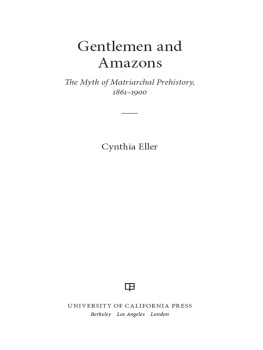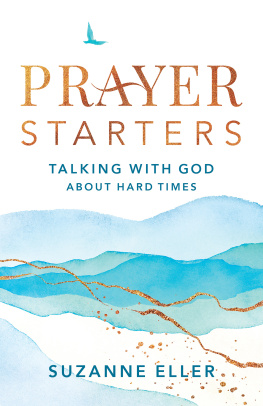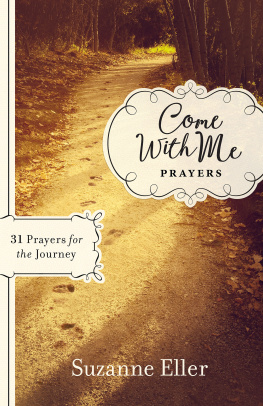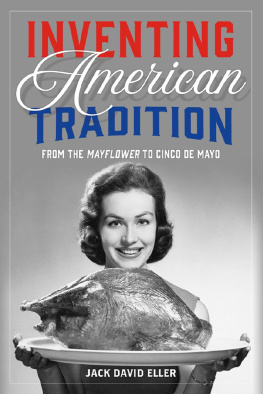Eller - Gentlemen and Amazons: the myth of matriarchal prehistory, 1861-1900
Here you can read online Eller - Gentlemen and Amazons: the myth of matriarchal prehistory, 1861-1900 full text of the book (entire story) in english for free. Download pdf and epub, get meaning, cover and reviews about this ebook. City: London;Berkeley;Calif, year: 2011, publisher: University of California Press, genre: Romance novel. Description of the work, (preface) as well as reviews are available. Best literature library LitArk.com created for fans of good reading and offers a wide selection of genres:
Romance novel
Science fiction
Adventure
Detective
Science
History
Home and family
Prose
Art
Politics
Computer
Non-fiction
Religion
Business
Children
Humor
Choose a favorite category and find really read worthwhile books. Enjoy immersion in the world of imagination, feel the emotions of the characters or learn something new for yourself, make an fascinating discovery.
- Book:Gentlemen and Amazons: the myth of matriarchal prehistory, 1861-1900
- Author:
- Publisher:University of California Press
- Genre:
- Year:2011
- City:London;Berkeley;Calif
- Rating:4 / 5
- Favourites:Add to favourites
- Your mark:
- 80
- 1
- 2
- 3
- 4
- 5
Gentlemen and Amazons: the myth of matriarchal prehistory, 1861-1900: summary, description and annotation
We offer to read an annotation, description, summary or preface (depends on what the author of the book "Gentlemen and Amazons: the myth of matriarchal prehistory, 1861-1900" wrote himself). If you haven't found the necessary information about the book — write in the comments, we will try to find it.
Eller: author's other books
Who wrote Gentlemen and Amazons: the myth of matriarchal prehistory, 1861-1900? Find out the surname, the name of the author of the book and a list of all author's works by series.
Gentlemen and Amazons: the myth of matriarchal prehistory, 1861-1900 — read online for free the complete book (whole text) full work
Below is the text of the book, divided by pages. System saving the place of the last page read, allows you to conveniently read the book "Gentlemen and Amazons: the myth of matriarchal prehistory, 1861-1900" online for free, without having to search again every time where you left off. Put a bookmark, and you can go to the page where you finished reading at any time.
Font size:
Interval:
Bookmark:
Gentlemen and Amazons

Cynthia Eller

UNIVERSITY OF CALIFORNIA PRESS
Berkeley Los Angeles London
University of California Press, one of the most distinguished university presses in the United States, enriches lives around the world by advancing scholarship in the humanities, social sciences, and natural sciences. Its activities are supported by the UC Press Foundation and by philanthropic contributions from individuals and institutions. For more information, visit www.ucpress.edu.
Epigraphs: Milan Kundera, The Book of Laughter and Forgetting, trans. Michael Henry Heim (New York: Viking, 1979), 22. Elizabeth Cady Stanton, The Matriarchate or Mother-Age, address of Mrs. Stanton before the National Council of Women, February 1891.
University of California Press
Berkeley and Los Angeles, California
University of California Press, Ltd.
London, England
2011 by The Regents of the University of California
Library of Congress Cataloging-in-Publication Data
Eller, Cynthia, 1958
Gentlemen and Amazons: the myth of matriarchal prehistory,
18611900 / Cynthia Eller.
p. cm.
Includes bibliographical references and index.
ISBN 978-0-520-24859-5 (cloth: alk. paper)ISBN 978-0-520-26676-6 (pbk. : alk. paper)
1. Women, Prehistoric. 2. Religion, Prehistoric. 3. Matriarchy.
4. Matrilineal kinship. 5. Patriarchy. 6. Feminist theory
I. Title.
GN799.W66.E487 2011
306.859dc22 2010038919
Manufactured in the United States of America
20 19 18 17 16 15 14 13 12 11
10 9 8 7 6 5 4 3 2 1
This book is printed on 50# Enterprise, a 30% post consumer waste, recycled, de-inked fiber and processed chlorine free. It is acid-free and meets all ANSI/NISO (z 39.48) requirements.
For Teresa M. Shaw,
my favorite historian
People are always shouting they want to create a better future. Its not true. The future is an apathetic void of no interest to anyone. The past is full of life, eager to irritate us, provoke and insult us, tempt us to destroy or repaint it. The only reason people want to be masters of the future is to change the past. They are fighting for access to the laboratories where photographs are retouched and biographies and histories rewritten.
MILAN KUNDERA
The period of womans supremacy lasted through many centuriesundisputed, accepted as natural and proper wherever it existed, and was called the matriarchate, or mother-age.
ELIZABETH CADY STANTON
I like to tell my daughter that Ive been working on this book her entire lifetime, and in one sense, thats true. Ive paused from this research at numerous points to take on other projects, but the history of matriarchal myth has been the guiding passion of my scholarly work for fourteen years now.
I teach my world religions students that according to the Buddhist worldview, everything is connected: wherever you pick up the fabric of the universe, the threads eventually lead everywhere else. For me, matriarchal myth is where I pick up the fabric of the universe. It looks like a narrow interest, but the threads lead everywhere, and I continue to enjoy following them outward and back again.
A number of people and institutions have been kind enough to support my love affair with ideas of prehistoric matriarchy and goddess worship. Most notably, the Center for the Study of Religion at Princeton University has given me an institutional hometwice as a Visiting Fellow and for many years as an Affiliate Fellowthat has proven invaluable. Generations of graduate students and visiting scholars have endured my rough drafts and provided helpful feedback. I am particularly grateful to Robert Wuthnow and Anita Kline, who have always made me feel at home at Princeton.
Support from the National Endowment for the Humanities allowed me to work intensively on this and related projects during the 200405 academic year. Montclair State University offered a sabbatical leave in 200708, during which I was able to complete the manuscript.
Numerous friends and colleagues read through earlier versions of the manuscript, or just as usefully, listened to my woes and helped me rethink the organization of the project. In this regard, I would like to especially thank David Benfield, Mary Bly, Lauren Bryant, Deborah Campbell, Robert Fraser, Ronald Hutton, Elizabeth Leake, Lizzie Reis, Rosemary Radford Ruether, Teresa Shaw, Arlene Stein, Lise Vail, and Sylvia and Robert Wolfe. Uwe Bergermann and the members of his Reading German class at NYUs Deutsches Haus guided me patiently through the mysteries of the German language. In the world of translation, Uwe taught me to fish, which was impressive indeed; but I am also everlastingly grateful to those who just caught the fish and handed them to me. For assistance with French translations, I thank Heidi Katz and Pamela Klassen; for German, Marion Grau, Tamara Schoenbaum, Vondah Sheldon, and the truly amazing Anne Phillips-Krug; for Italian, the brilliant Rosa Zagari-Molinari.
Reed Malcolm of the University of California Press has been patient with me past all reasonable expectations, as have Kalicia Pivirotto, Jacqueline Volin, and Susan Carter, a superb copy editor.
For keeping the home front running smoothly, I thank Jon Greene, Coline Chaumont, Janne Andresen, and Glah Kuzaki. All my love to Jon Greene, Sophie Eller, and Lucy Eller for giving my heart its true home.

In 2003, Dan Brown became an overnight success and a media sensation with the publication of The Da Vinci Code. The novel is formulaic: a thriller. Before the reader can adjust her chaise longue and slather on her sunscreen, our hero, Dr. Robert Langdon, is falsely accused of a heinous crime at the world-famous Louvre Museum in Paris. A beautiful, intelligent FrenchwomanSophie Neveuappears and helps Langdon escape. At first, he does not even realize that he is the intended prey of the authorities. Chases ensue, on foot, by automobile, and by airplane. The mystery begins with strange signs accompanying the murder of Jacques Saunire, a curator at the Louvre, and spirals out from there. Our hero, a Harvard symbologist, does not have the leisure to sit and cogitate, as he is undoubtedly accustomed to doing back home in the Widener Library stacks. No, he has to run fast and think faster. Not only must he be clever and quick, he must also be physically agileeven forcefuland attuned to the twisted channels of the minds of criminals, religious fanatics, eccentric historians, cunning priests, and corrupt officials all of whom turn out to have a lot in common, since they are on the side of evil. Whom can he trust?
As Western Christian history unravels before him, the apparently good turn out to be evil, and vice versa. Jesus, Christian readers may be relieved to learn, is good, very good. So is his mother, the Virgin Mary. So far so Catholic. But wait: dont start to genuflect yet! Yes, Jesus is good, and his mother is good, but so is his wife! Thats right, Jesuss wife, Mary Magdalene. And his great-great-great-etc. granddaughter, our heros beautiful sidekick and skilled code cracker, Sophie Neveu. If youve never heard of Jesuss wifeor you had, but thought she was a reformed prostitute and devoted disciple, but not a special friend of our Lorddont feel bad. Its a news flash for most of us, because the worlds most powerful and secretive institution (the Catholic Church, naturally) has conspired to keep this information from Jesuss flock for nearly two thousand years. Only a few, the elect, the Leonardo da Vincis of the world, have kept the flame of truth alive for future generations, hoping that one day all Christians will be able to accept the full humanity of the Christ.
Next pageFont size:
Interval:
Bookmark:
Similar books «Gentlemen and Amazons: the myth of matriarchal prehistory, 1861-1900»
Look at similar books to Gentlemen and Amazons: the myth of matriarchal prehistory, 1861-1900. We have selected literature similar in name and meaning in the hope of providing readers with more options to find new, interesting, not yet read works.
Discussion, reviews of the book Gentlemen and Amazons: the myth of matriarchal prehistory, 1861-1900 and just readers' own opinions. Leave your comments, write what you think about the work, its meaning or the main characters. Specify what exactly you liked and what you didn't like, and why you think so.


![Eller - The gluten free gourmand : [a little cookbook]](/uploads/posts/book/92634/thumbs/eller-the-gluten-free-gourmand-a-little.jpg)







